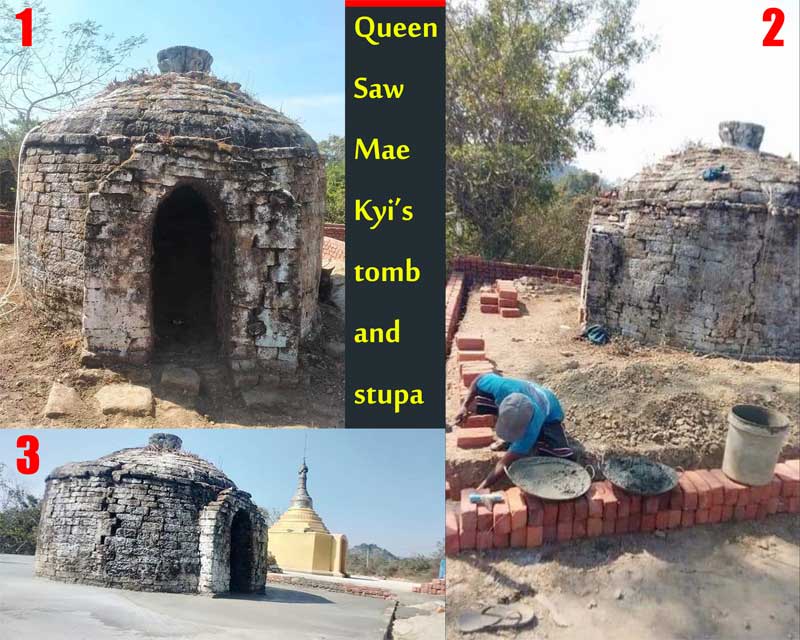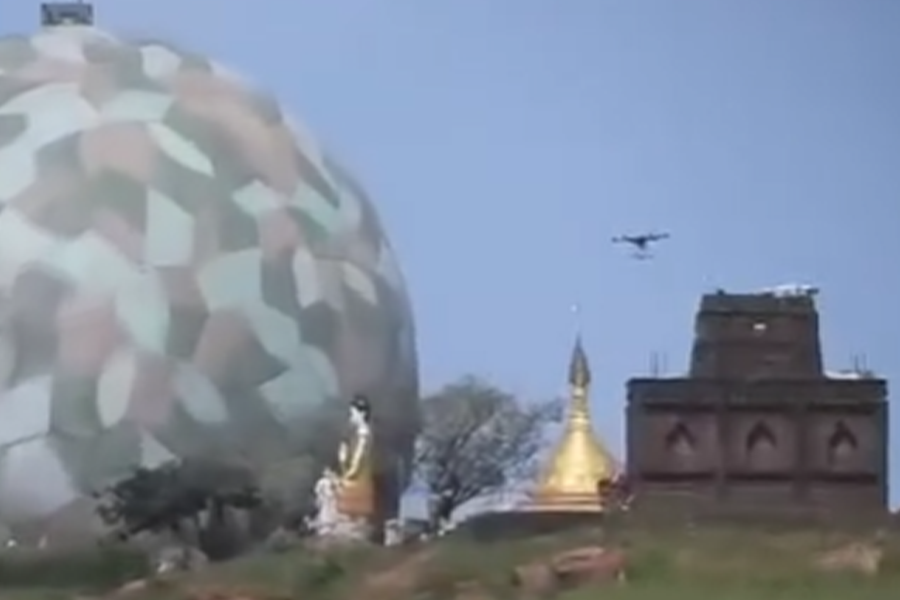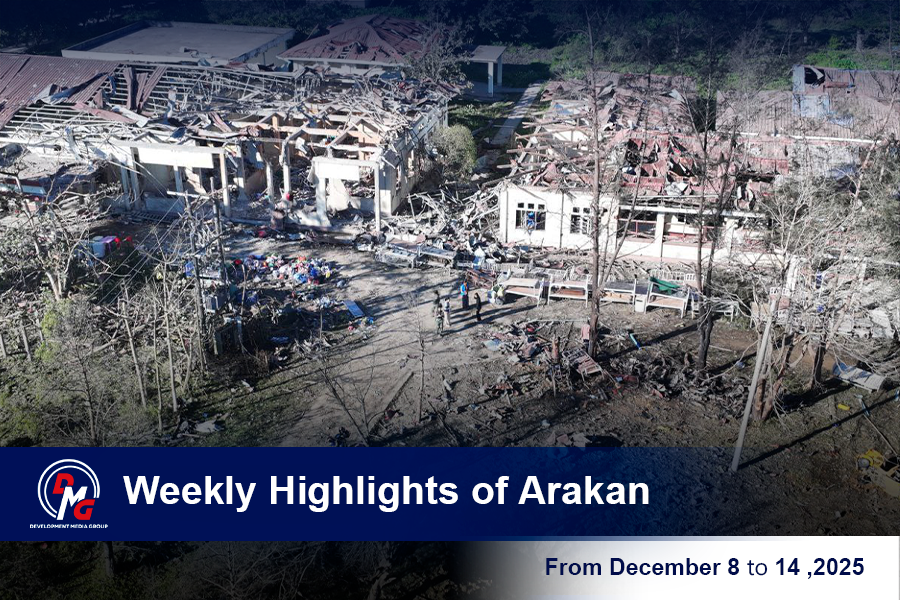- Junta unable to hold elections in dozens of wards and village-tracts in Sittwe, Kyaukphyu
- Fighting escalates between Myanmar military, Arakan Army in Ayeyarwady Region
- Regime steps up civilian arrests in Sittwe
- ULA safeguards Mrauk-U's ancient heritage
- Arakan on the Edge: What the DMG Landmine Impact Report Reveals About Myanmar's Deepening Humanitarian Crisis
Locals criticise concrete pavement laid near Queen Saw Mae Kyi’s tomb and stupa in Ramree Twsp
The burial site of Queen Saw Mae Kyi of the Mrauk-U era and the stupa are currently about 500 years old.
22 Feb 2023

DMG Newsroom
23 February 2023, Ramree
Locals and social media users have criticised the laying of concrete pavement near a stupa and the tomb of the historical Queen Saw Mae Kyi near Mee Kyaung Tet Village in Ramree Township, Arakan State.
The burial site of Queen Saw Mae Kyi of the Mrauk-U era and the stupa are currently about 500 years old.
Locals say construction of the 25-by-25-foot concrete slab at Queen Saw Mae Kyi’s tomb began on February 9, led by two prominent Buddhist monks and a community elder in Ramree Township.
The residents did not want the historical site to be damaged by the laying of the concrete pavement, but the project was completed nonetheless on February 21.
“As we were worried that the history will be damaged, we negotiated to prohibit the construction of the concrete pavement,” said U Htay Oo, a resident of Atwinpyin Village.
Historical buildings and stupas that are more than 75 years old are designated as ancient heritage in Myanmar, and historians emphasise that if ancient heritage is to be preserved properly, it should be done in consultation with knowledgeable experts.
“If such cultural heritages are to be repaired, the Department of Archeology and National Museum must be notified. Officials from the department are conducting field surveys and inspecting ancient heritage. If this is not the case, there are actions that can be taken,” said Arakanese historian Minbya Min Thein Zan.
DMG phoned the abbot of the Mee Khaung Tet Village monastery and U Maung Oo Kyaw, a community elder, to seek comment on the controversial concrete pavement, but they could not be reached.
Queen Saw Mae Kyi was born in Ywayin Village, about 10 miles away from Ramree town, and was wedded to the Mrauk-U King Mun Bar Gree. The king, under the mistaken impression that Queen Saw Mae Kyi was having an affair with her mason Maung Shwe Thee, killed her near the site where her tomb and a stupa stand today, according to historical records.







9 M.jpg)









